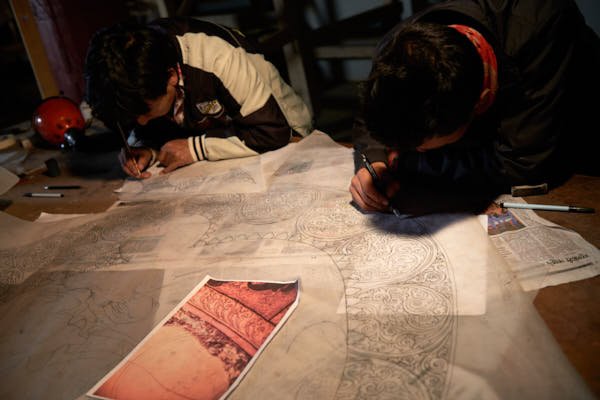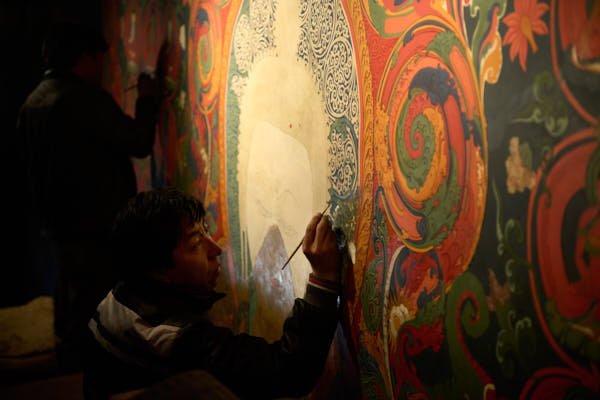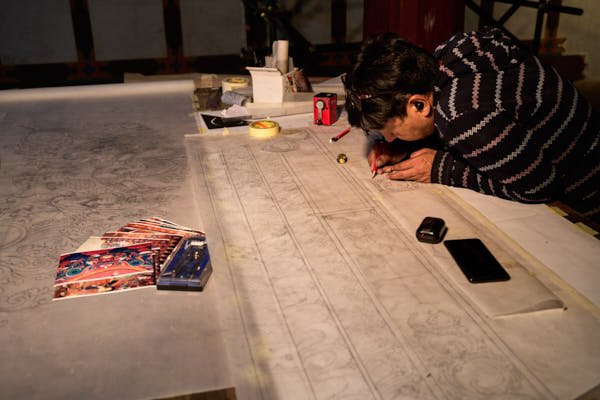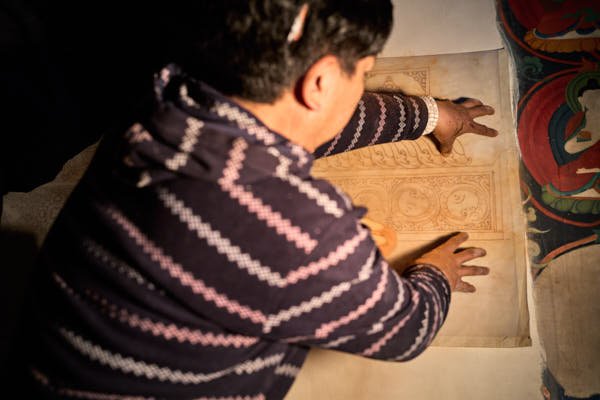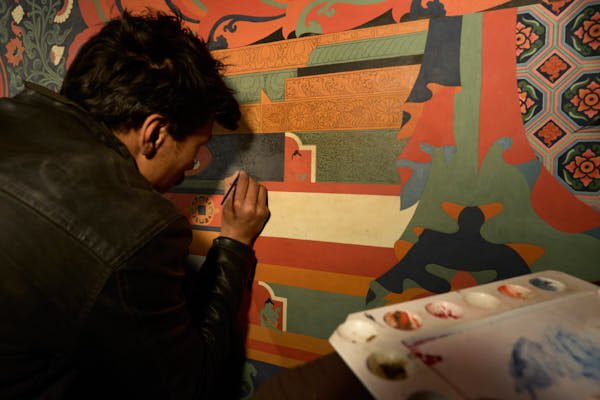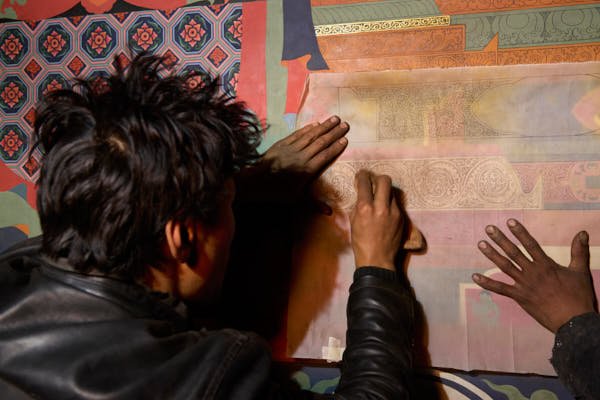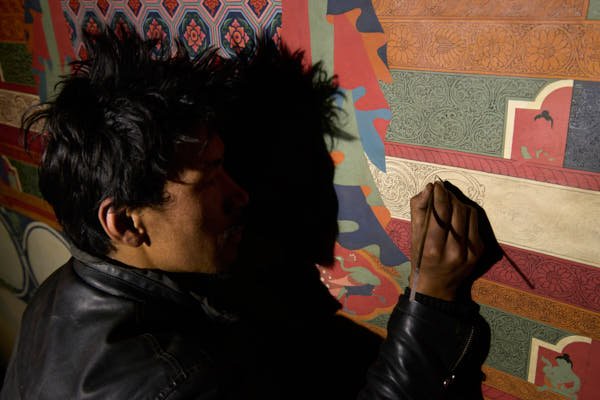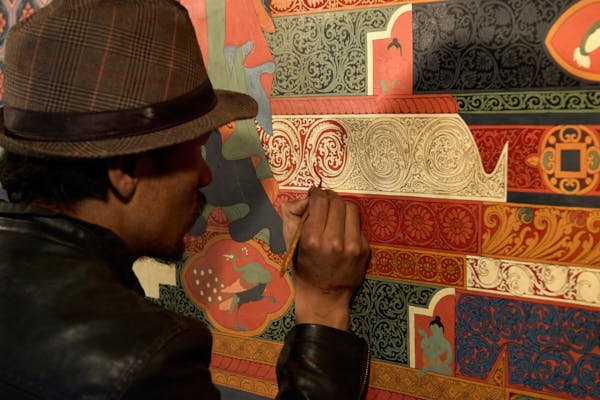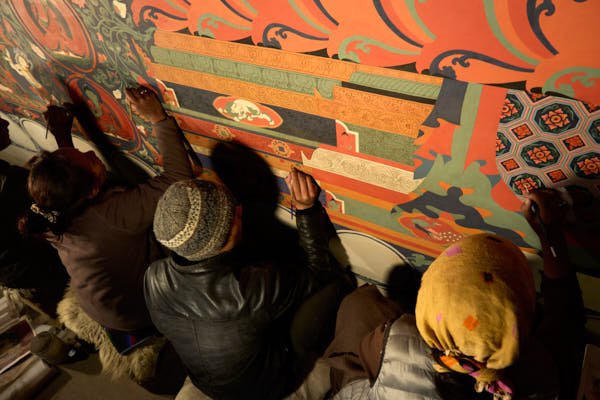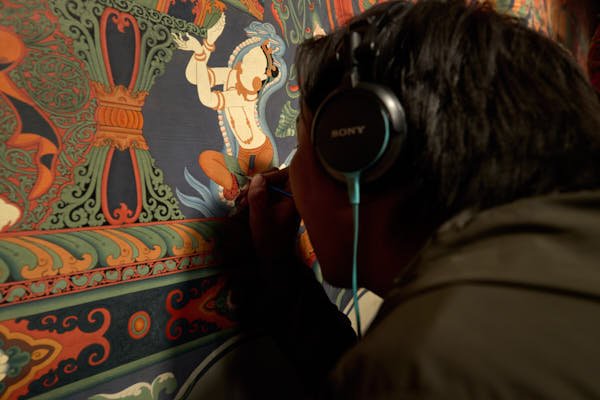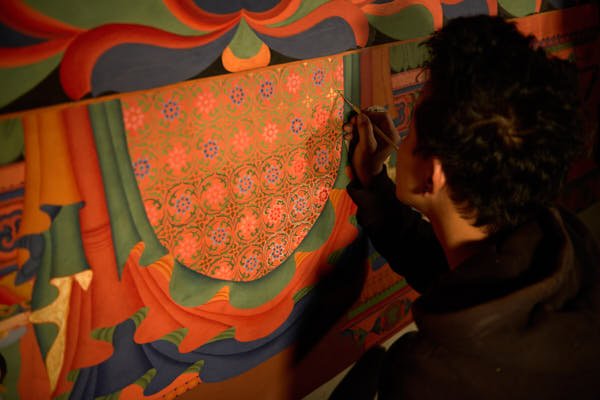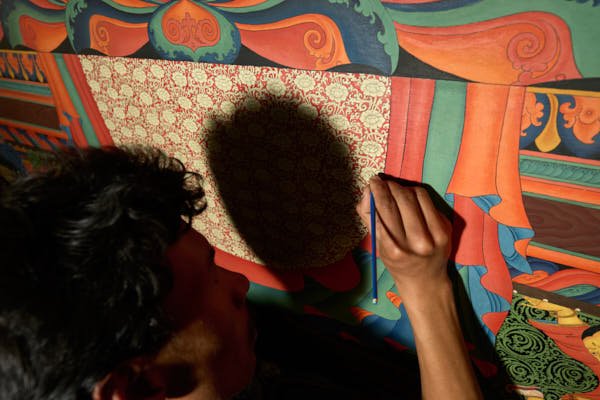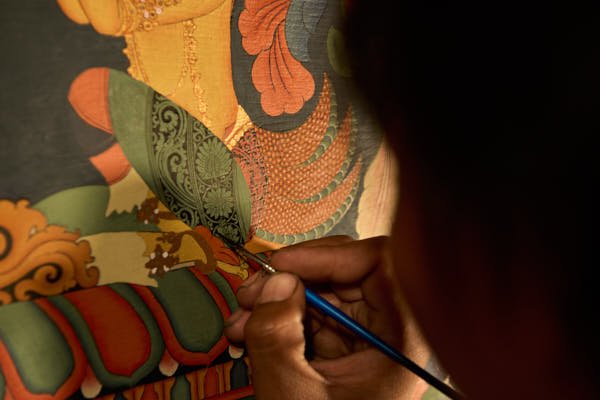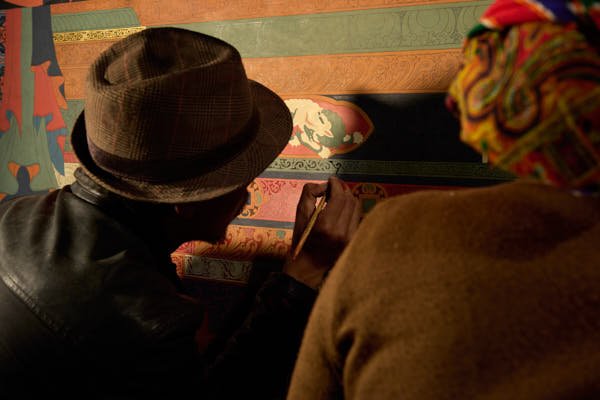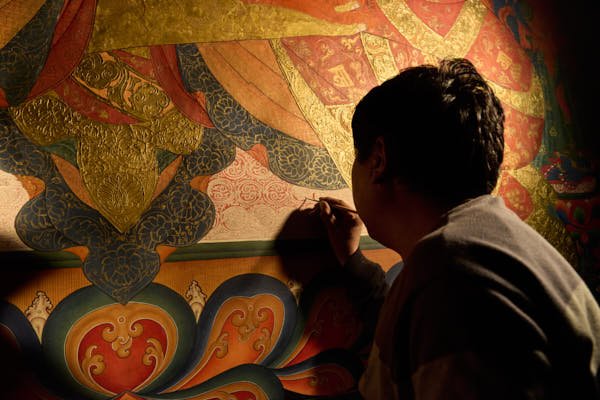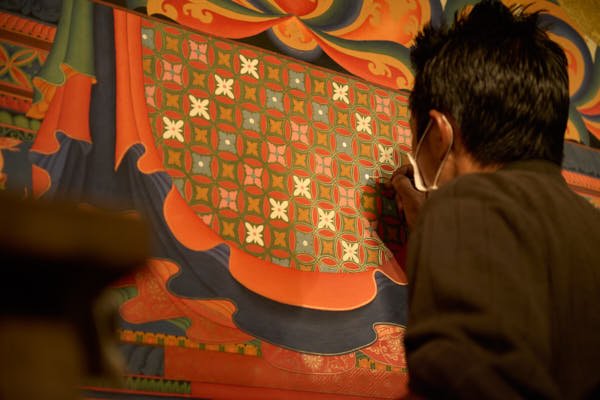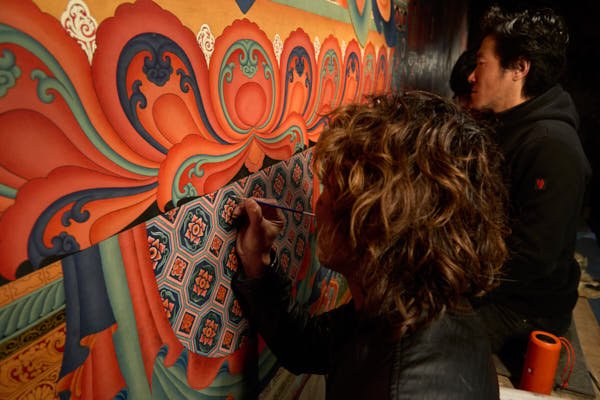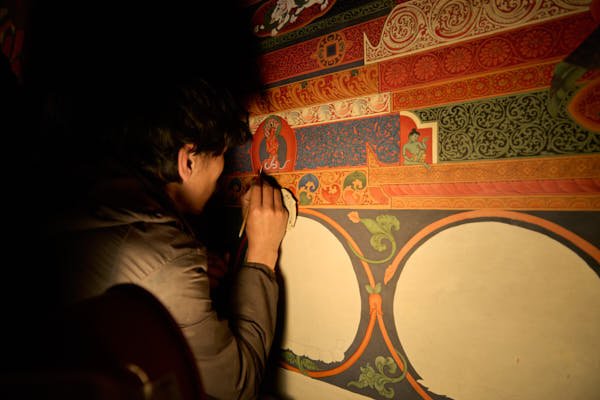finding patterns
Where the old paintings to be reconstructed had already damaged patterns or decorations there were enough elements to complete the reconstructions. Nonetheless, given the large surface to be painted there were many areas to be decorated without having an original source to copy from. To avoid repetitions it was decided not to use the patterns already present in the monastery. In such cases an extensive database of photographs of the major XV century Sakya temples I took in the past years came to help for inspiration. Countless hours were spent looking for the most suitable patterns or decorations to be used in each area to be reconstructed.
the technique
The photos of the chosen elements and decorations were scaled up or down using Adobe software and subsequently printed out on paper so as to fit the dimensions needed. The preparatory drawing was then carried out on drafting paper, which was pierced afterwards following the outlines of the drawing. The piercing would allow transferring straightforwardly the drawing to the surface of the plaster by pouncing powder pigment wrapped in a gauze tissue. The final drawing was then obtained by outlining the dots left by the pouncing with pencils, following an old technique known as "spolvero", used either in Europe and Asia.

